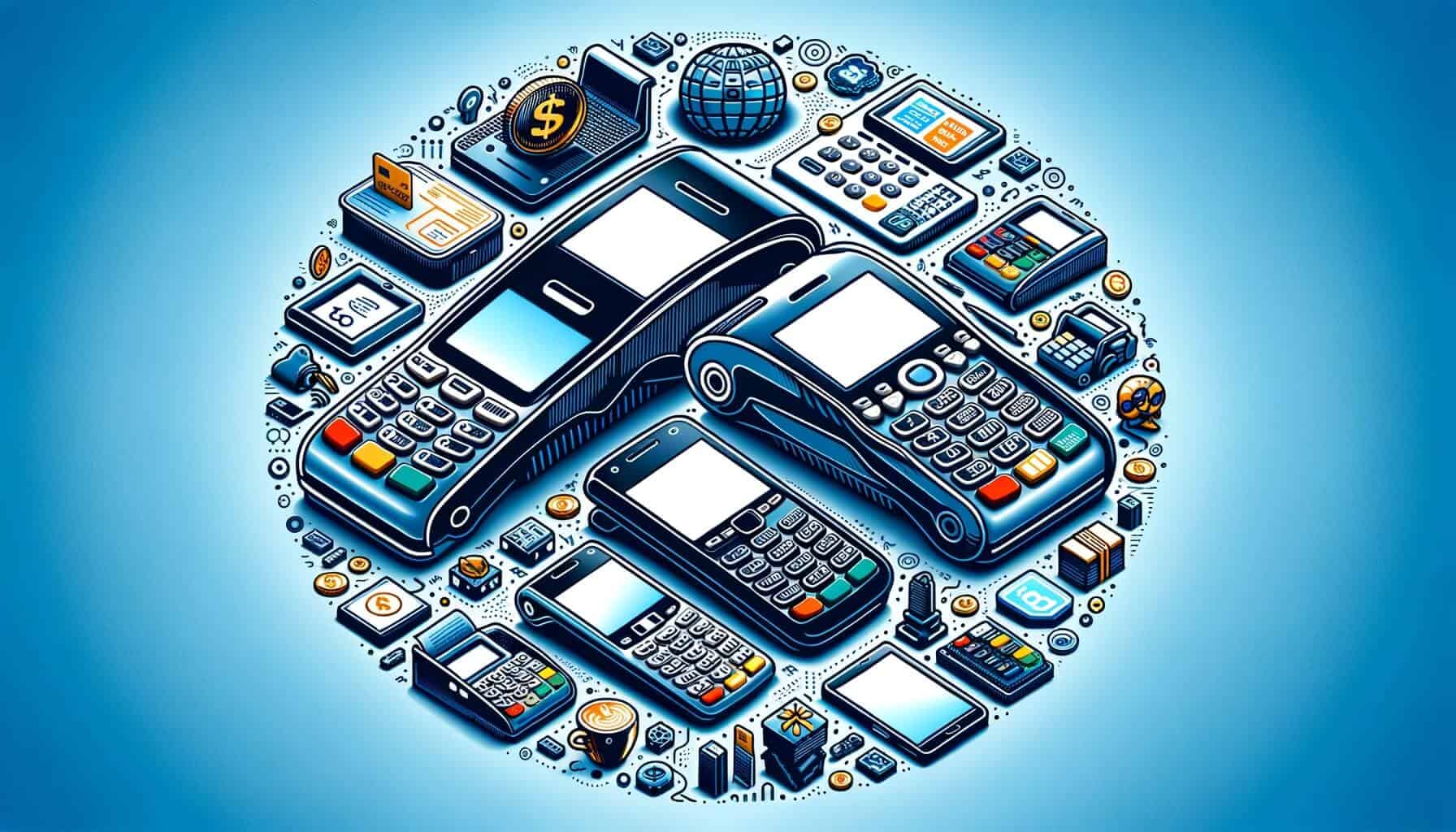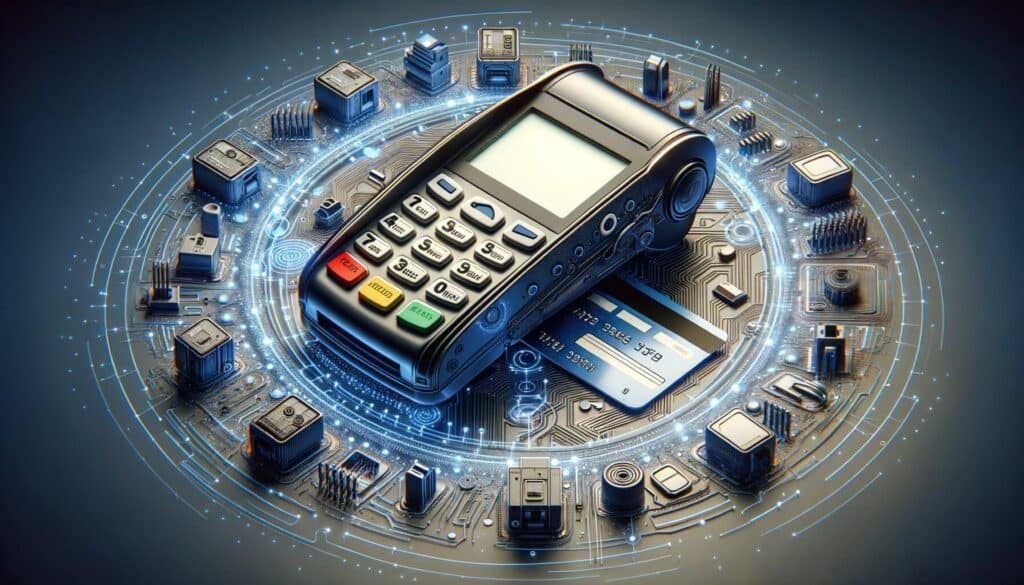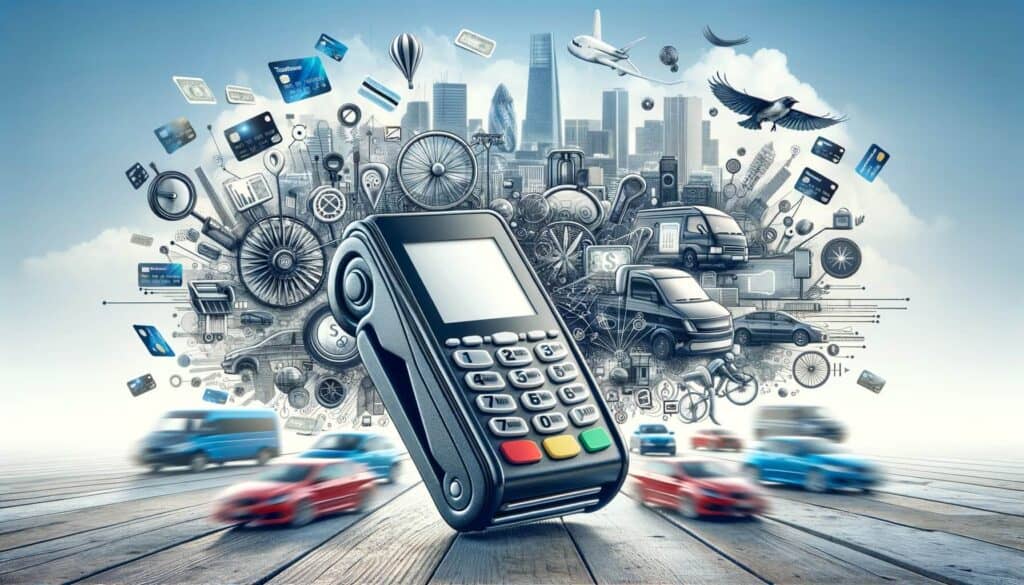
By Harriet Forster March 24, 2025
In today’s digital age, credit card transactions have become the norm for businesses of all sizes. Whether you run a small retail store or a large e-commerce platform, having a reliable and efficient credit card terminal is crucial for smooth payment processing.
With a wide range of options available in the market, it can be overwhelming to choose the right one for your business. This comprehensive guide will walk you through the different types of credit card terminals, their features, and help you make an informed decision.
Traditional Credit Card Terminals: Exploring the Basics and Features

Traditional credit card terminals have been the go-to option for businesses for many years. These terminals are usually countertop devices that connect to a phone line or internet connection to process payments. They come with a keypad for entering transaction amounts and customer PINs, a magnetic stripe reader for swiping cards, and a receipt printer.
One of the key advantages of traditional credit card terminals is their reliability. They are designed to handle high transaction volumes and are less prone to technical glitches. Additionally, they offer a high level of security by encrypting cardholder data during the transaction process.
However, traditional terminals have certain limitations. They lack mobility and are confined to a fixed location. Moreover, they may not support newer payment technologies such as contactless payments or EMV chip cards. Despite these limitations, traditional credit card terminals are still widely used by businesses that prioritize stability and security over mobility.
Mobile Credit Card Terminals: Convenience and Flexibility on the Go

With the rise of smartphones and tablets, mobile credit card terminals have gained popularity among businesses that require flexibility and mobility. These terminals utilize mobile apps and card readers that can be attached to a smartphone or tablet, turning them into portable payment processing devices.
Mobile credit card terminals offer several advantages. They allow businesses to accept payments anywhere, whether it’s at a trade show, a pop-up shop, or a customer’s doorstep. They are also cost-effective, as they eliminate the need for expensive traditional terminals and phone lines.
Additionally, mobile terminals often come with advanced features such as inventory management and customer relationship management (CRM) integration.
However, it’s important to note that mobile terminals rely on a stable internet connection or cellular data to process transactions. In areas with poor connectivity, businesses may face challenges in accepting payments. Furthermore, the smaller screen size of smartphones and tablets may not be ideal for businesses with high transaction volumes.
Virtual Credit Card Terminals: Secure Online Payment Processing

As online shopping continues to grow, businesses need a secure and convenient way to accept payments over the internet. Virtual credit card terminals provide a solution by allowing businesses to process payments through a web-based interface.
Virtual terminals are typically accessed through a web browser and require an internet connection. They enable businesses to manually enter credit card information received over the phone or through email. Virtual terminals are particularly useful for businesses that operate remotely or have a significant online presence.
One of the key advantages of virtual terminals is their ease of use. They eliminate the need for physical hardware and can be accessed from any device with an internet connection. Additionally, virtual terminals offer robust security features such as encryption and tokenization to protect sensitive customer data.
However, virtual terminals may not be suitable for businesses that require in-person transactions. They lack the physical card reader found in traditional terminals, making them less convenient for face-to-face payments. Furthermore, businesses that process a high volume of online transactions may face higher processing fees compared to other types of terminals.
Wireless Credit Card Terminals: Unleashing Mobility for Businesses

Wireless credit card terminals combine the convenience of mobile terminals with the reliability of traditional terminals. These terminals use wireless technology such as Bluetooth or Wi-Fi to connect to a network, allowing businesses to accept payments without being tethered to a fixed location.
Wireless terminals offer businesses the flexibility to accept payments anywhere within the range of their wireless network. They are particularly useful for businesses that operate in large spaces or require mobility, such as restaurants, food trucks, or event venues. Additionally, wireless terminals often come with advanced features such as inventory management and real-time reporting.
One of the key advantages of wireless terminals is their ease of setup. They require minimal installation and can be quickly connected to an existing network. Moreover, wireless terminals offer the same level of security as traditional terminals, with encryption and tokenization to protect customer data.
However, businesses considering wireless terminals should ensure they have a stable and secure wireless network in place. Weak or unreliable network connections can lead to transaction failures or security vulnerabilities. Additionally, businesses should be aware of potential interference from other wireless devices in the vicinity.
Point-of-Sale (POS) Systems: Integrated Solutions for Streamlined Operations
Point-of-sale (POS) systems are comprehensive solutions that combine hardware and software to streamline payment processing and other business operations. These systems typically include a touchscreen terminal, cash register, barcode scanner, receipt printer, and other peripherals.
POS systems offer businesses a wide range of features beyond payment processing. They can handle inventory management, employee management, customer relationship management, and generate detailed sales reports. POS systems are particularly beneficial for businesses with multiple locations or complex operations.
One of the key advantages of POS systems is their ability to integrate with other business software and systems. They can be seamlessly connected to accounting software, e-commerce platforms, and loyalty programs, allowing for efficient data synchronization and streamlined operations. Additionally, POS systems often come with advanced security features such as end-to-end encryption and tokenization.
However, POS systems can be more expensive compared to other types of credit card terminals. They require upfront investment in hardware and software licenses, as well as ongoing maintenance and support costs. Moreover, businesses should ensure they have the necessary technical expertise to set up and manage a POS system effectively.
Contactless Payment Terminals: Embracing the Future of Transactions
Contactless payment terminals, also known as tap-and-go terminals, enable businesses to accept payments through near field communication (NFC) technology. These terminals allow customers to make payments by simply tapping their contactless-enabled cards or mobile devices on the terminal.
Contactless payment terminals offer several advantages for businesses and customers alike. They provide a faster and more convenient payment experience, reducing transaction times and improving customer satisfaction. Additionally, contactless payments are more secure compared to traditional magnetic stripe cards, as they use dynamic encryption for each transaction.
Contactless payment terminals are particularly beneficial for businesses with high transaction volumes, such as retail stores, restaurants, and public transportation. They can significantly reduce queue times and increase overall efficiency. Moreover, contactless payments are gaining popularity among consumers, with a growing number of people adopting mobile wallets and contactless-enabled cards.
However, businesses considering contactless payment terminals should ensure that their customers have access to contactless-enabled cards or mobile devices. While contactless payments are becoming more prevalent, some customers may still prefer traditional payment methods. Additionally, businesses should be aware of potential security risks associated with contactless payments, such as unauthorized transactions or data breaches.
EMV Chip Card Terminals: Enhancing Security and Reducing Fraud
EMV chip card terminals have become the standard in many countries as a result of increased security measures to combat card fraud. EMV stands for Europay, Mastercard, and Visa, the three companies that developed the chip card technology. These terminals are designed to process payments from EMV chip cards, which contain embedded microchips that store and protect cardholder data.
EMV chip card terminals offer several advantages over traditional magnetic stripe terminals. They provide a higher level of security by generating a unique transaction code for each payment, making it difficult for fraudsters to replicate card information. Additionally, EMV chip cards are less susceptible to skimming and counterfeiting, reducing the risk of card fraud for businesses.
EMV chip card terminals are particularly beneficial for businesses that process in-person transactions. They are widely accepted by customers and are becoming the standard in many industries. Moreover, businesses that do not adopt EMV chip card terminals may be held liable for fraudulent transactions that could have been prevented with chip card technology.
However, businesses considering EMV chip card terminals should be aware of potential implementation challenges. Upgrading to EMV chip card terminals may require additional hardware and software updates, as well as staff training. Additionally, businesses should ensure that their payment processor supports EMV chip card transactions to avoid any compatibility issues.
Choosing the Right Credit Card Terminal for Your Business: Factors to Consider
When choosing a credit card terminal for your business, it’s important to consider several factors to ensure it meets your specific needs. Here are some key factors to consider:
1. Business Type and Size: Consider the nature of your business and the volume of transactions you process. Retail stores, restaurants, and service-based businesses may have different requirements compared to e-commerce platforms or mobile businesses.
2. Payment Methods: Determine the types of payment methods you want to accept. Consider whether you need to support traditional magnetic stripe cards, EMV chip cards, contactless payments, or online transactions.
3. Mobility: Assess whether your business requires mobility and flexibility. If you frequently operate outside of a fixed location or attend events, mobile or wireless terminals may be more suitable.
4. Integration: Consider whether you need your credit card terminal to integrate with other business systems such as accounting software, inventory management, or loyalty programs. POS systems offer comprehensive integration capabilities.
5. Security: Evaluate the security features offered by different credit card terminals. Look for encryption, tokenization, and EMV chip card support to protect customer data and reduce the risk of fraud.
6. Cost: Determine your budget and consider the upfront costs, ongoing fees, and potential return on investment. Compare the costs of different credit card terminals and choose the one that offers the best value for your business.
Conclusion
Choosing the right credit card terminal is a critical decision for any business. It impacts not only the payment processing experience for your customers but also the efficiency and security of your operations. By understanding the different types of credit card terminals and considering factors such as your business type, payment methods, mobility requirements, integration needs, security features, and cost, you can make an informed decision that aligns with your business goals.
Whether you opt for a traditional credit card terminal, a mobile solution, a virtual terminal, a wireless device, a POS system, or a contactless payment terminal, each option has its own advantages and considerations. By carefully evaluating your business needs and priorities, you can choose a credit card terminal that enhances your payment processing capabilities, improves customer satisfaction, and supports the growth of your business.